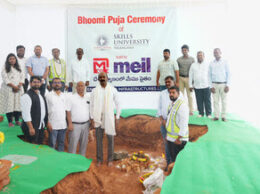INDORE, Madhya Pradesh, India : There are two pillars of modern physics—general relativity (GR), which describes phenomena on the largest cosmological scale, and quantum mechanics (QM), which describes phenomena on the smallest, submicroscopic scale. But these theories conflict with each other. For decades, finding a way to reconcile the two has been the grand goal of physicists worldwide.
In a landmark paper, Mr. Subhajit Waugh from the Raja Ramanna Centre for Advanced Technology, Department of Atomic Energy, Government of India, has proposed a solution. According to Mr. Waugh, the flawed mathematical assumptions that form the basis of contemporary theories have led to the disregard of, what may well be, the true nature of the universe—that it expands like a 3D hyper-surface. The work was published online as a preprint on July 8, 2022.
“The accepted theory states that the universe is three-dimensionally flat, meaning it does not curve even at infinitely large distances. However, many recent results have revealed cracks in the theory, and my work has finally smashed the door open—the universe is curved; it is a 3D hyper-surface,” explains Mr. Waugh.
Using the center of mass equation and the Minkowski space–time equations as his main tools, Mr. Waugh demonstrates the curvature of the universe (by considering the sum of solid angles instead of plane angles) and the existence of two different frames of reference/viewpoints. The universe is perceived differently from each viewpoint, but it is precisely this which allows the reconciliation between QM and GR. The work has profound implications for several concepts like wave-particle duality, Lagrangian–Hamiltonian duality, quantum entanglement, and crucial conservation laws, as well as unresolved questions like dark matter and dark energy.
“By perceiving the universe as a 3D hyper-surface of an expanding balloon, all these concepts can be easily and coherently put together—finally building a beautiful jigsaw of nature and the universe,” explains Mr. Waugh.
This work could fundamentally change how we think of the universe and look to explore it further. But the implications go far beyond satisfying scientific curiosity.
“The advent and understanding of quantum mechanics itself has led to remarkable technological advancement, and a unifying all-encompassing “Theory of Everything” would indubitably open numerous new unthought of technological pathways,” concludes Mr. Waugh.
A brief summary of the research geared towards non-specialist audiences, can be found here.









